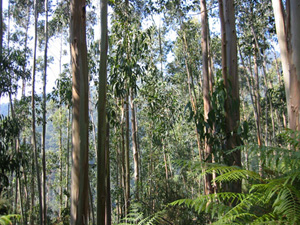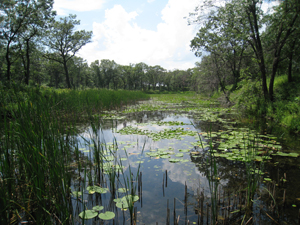Species Responses to Climate Change Some species will shift their geographic distributions by great distances in response to climate change, while others will largely stay put. Similarly, some species will be at great risk of extinction, while others will be mostly unaffected. At present, ecologists, evolutionary biologists and conservation biologists lack a thorough understanding of which species will be most sensitive to changes in climate. To address this challenge our lab is engaged in a large, multi-investigator effort to map out the climate tolerances of thousands of plants and to relate this in a predictive fashion to species traits. Our principal data come from occurrences beyond species' own native ranges, where they are naturalized or grown in horticulture. By contrasting the climate conditions that require continued human assistance for plant surival versus those where species are able to self-perpetuate we are beginning to map out the fundamental niche relationships of plant species. This will provide major conceptual advances for ecological science and a basis for informed conservation efforts.
|
 |
|
| Plants, like this endemic mallow from California, are being evaluated for their potential to survive within the historic boundaries of their native range as climate changes over the remainder of this century. | ||
Species Invasions Our work integrates studies of local-scale invasion events with global invasion patterns. Our aim is to better understand and predict impacts of invasions on local, regional and global biodiversity. While such impacts are often negative, non-native species do provide a host of conservation benefits for native species in some systems. Current work in the lab aims to understand the evolutionary consequence of differences in the region of origin of non-native species with respect to their eventual success and impact. Finally, we are interested in gleaning information about ecological, evolutionary and biogeographical processes from the many unplanned ‘experiments’ that invasions provide.
|
 |
|
Exotic Eucalyptus globulus stands in Spain. Although woodlands dominated by non-native trees can present significant conservation challenges, such woodlands also provide habitat for many native species and have been used in some tropical systems as a catalyst to restore native forests.
|
||
Extinction Dynamics Species extinctions can occur quickly in punctuated events, but more often extinction is a slow process characterized by pronounced time lags following episodes of environmental change. Our aim is to better understand these time lags, and in particular to evaluate the predictability and dynamics of species extinctions. We are currently collaborating with a paleoecologist, Steve Jackson, to apply traditional paleoecology techniques in an unconventional manner (to study just the most recent paleontogical past); our aim so as to create long-term ecological data sets that record disturbance events and subsquent extinctions over the last several hundred years.
|
 |
|
| Field site at the Miller Woods section of the Indiana Dunes National Lakeshore, where we are studying the extinction dynamics of aquatic species over the past 300 years. | ||
|
||
|
